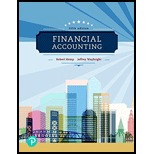
Financial Analysis
Purpose: To help familiarize you with the financial reporting of a real company in order to further your understanding of the chapter material you are learning.
This case addresses the long-term assets of Columbia Sportswear. The majority of these assets consist of property and equipment and intangible assets. In the text, you learned how most long-term tangible assets used in business are capitalized and depreciated over their estimated useful lives. Further, you learned that certain intangible assets are amortized overtime, whereas others are not. In this case, you will not only recognize and understand the classification and presentation of these assets, but also explore the methods used by Columbia Sportswear to
Refer to Columbia Sportswear’s financial statements in Appendix A. Also, consider the information presented in footnote 2, under the headings Property, plant, and equipment and Intangible assets and
Requirements
- 1. What was the balance of net property, plant, and equipment on December 31, 2016? What was the balance of net property, plant, and equipment on December 31,2015? Did the amount of ending net property, plant, and equipment increase or decrease? Assume Columbia Sportswear removed $436,000 of fully depreciated assets from fixed assets in 2016. What effect did this have on the value of the net property, plant, and equipment Explain your answer.
- 2. What methods of depreciation were used by Columbia Sportswear? What were the estimated useful lives of the assets? What kinds of intangible assets does Columbia Sportswear have? Which Intangible assets are amortized by Columbia Sportswear, and which are not? Why?
- 3. What was the proportion of net property, plant, and equipment compared with the total assets on December 31, 2016? What was the proportion of net property, plant, and equipment compared with the total assets on December 31, 2015? Did the proportion increase or decrease during the year?
- 4. Columbia Sportswear lists “Leasehold improvements” and “Construction in progress” as part of Property, Plant, and Equipment. Although these assets are not discussed in the textbook, can you describe what these assets might represent?
Want to see the full answer?
Check out a sample textbook solution
Chapter 8 Solutions
Financial Accounting (5th Edition) (What's New in Accounting)
 Auditing: A Risk Based-Approach (MindTap Course L...AccountingISBN:9781337619455Author:Karla M Johnstone, Audrey A. Gramling, Larry E. RittenbergPublisher:Cengage Learning
Auditing: A Risk Based-Approach (MindTap Course L...AccountingISBN:9781337619455Author:Karla M Johnstone, Audrey A. Gramling, Larry E. RittenbergPublisher:Cengage Learning Managerial Accounting: The Cornerstone of Busines...AccountingISBN:9781337115773Author:Maryanne M. Mowen, Don R. Hansen, Dan L. HeitgerPublisher:Cengage Learning
Managerial Accounting: The Cornerstone of Busines...AccountingISBN:9781337115773Author:Maryanne M. Mowen, Don R. Hansen, Dan L. HeitgerPublisher:Cengage Learning Intermediate Accounting: Reporting And AnalysisAccountingISBN:9781337788281Author:James M. Wahlen, Jefferson P. Jones, Donald PagachPublisher:Cengage Learning
Intermediate Accounting: Reporting And AnalysisAccountingISBN:9781337788281Author:James M. Wahlen, Jefferson P. Jones, Donald PagachPublisher:Cengage Learning College Accounting, Chapters 1-27AccountingISBN:9781337794756Author:HEINTZ, James A.Publisher:Cengage Learning,
College Accounting, Chapters 1-27AccountingISBN:9781337794756Author:HEINTZ, James A.Publisher:Cengage Learning,



